|
WHIPTAIL STINGRAY
Dasyatis sp. (RAFINESQUE, 1810)
Age Late Cretaceous - Present - Occurrence Common
( Common terms for ray teeth )
Over twenty species have been
report with the earliest coming from the Late Cretaceous. The assignment
of some of these species to the genus
Dasyatis is questionable
(Cappetta, 1987). I've made no attempt to assign
the examples on this page to a particular species.
The teeth of this genus are small (2-5 mm) and have a very distinctive
shape. When viewed on profile the root juts out well past the
crown. The root has a deep nutrient grove and either a large
central foramen or a group of smaller foramina. There is a marked
difference between female and male teeth. Female teeth have a globular
crown with a prominent transverse ridge while the male cusp is high and
lacks the transverse ridge. Speaking from my own experience, the female
teeth are much more common then the male. Of my 15+
Dasyatis specimens
only 2 are males.
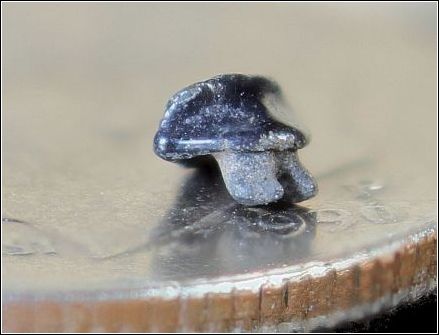
Dasyatis sp. female
These teeth are small (2-5mm), about 1/8 of an inch across.
This example perched on a US dime is only 2 mm across.
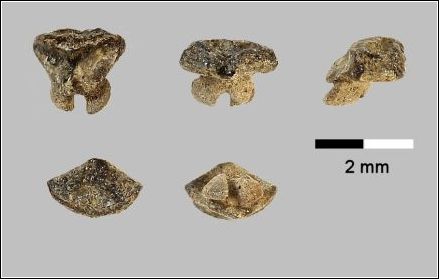
Plate 1
- Dasyatis sp. Female
Left to right, top to bottom
lingual, labial, profile, occlusal, basal
Monmouth County, NJ
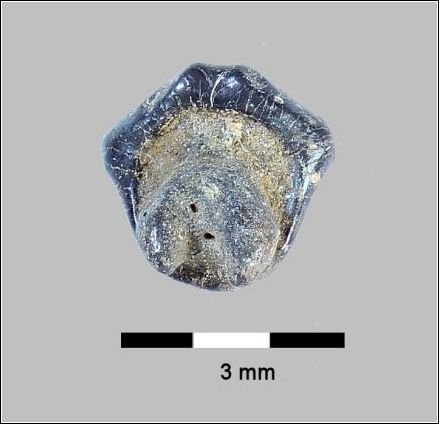
All the examples I've found have two or more foramina. These can be
seen as small holes in the grove of the root. Often these become filled
with
sediment and may be difficult to spot.
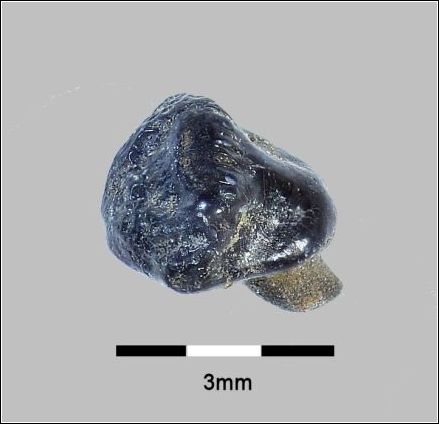
Profile view showing the transverse ridge.
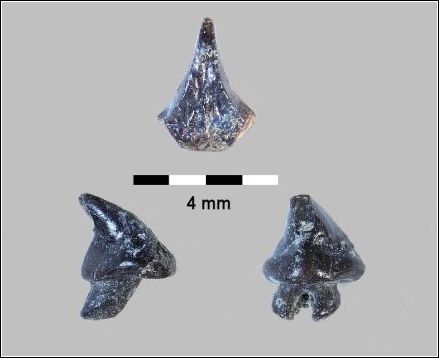
Plate 3
Dasyatis sp. male or breeding tooth.
Most reference material refers to this tooth design as a male
Dasyatis, it's
certainly worth noting an alternative theory that these
are male
breeding-season teeth.
Selected References
Cappetta, H., 1987. Chondrichthyes II: Mesozoic and
Cenozoic Elasmobranchii. Handbook of Paleoichthyology, 3B. Gustav
Fischer Verlag, Stuttgart and New York, 193 pp.
Return to top of page
|




